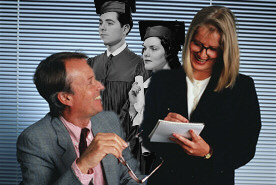


One single word of mine uttered personally in my own name would be an instance of presumptuous self-forgetfulness, and dialectically viewed it would incur with one word the guilt of annihilating the pseudonyms.
Søren Kierkegaard Concluding Unscientific Postscript 1846
In Australia, the use of pseudonyms by artists is associated with a kind of cultural treachery. Editors, judges, readers are shown to be unable to discern the true from the faketo be convinced by what suits their view of the world rather than artistic merit. The cases of Ern Malley and Helen Demidenko are examples of false personae which in the end operate, intentionally or not, as Trojan Horsesrewarding their hosts with devastated reputations.
Is this the only use of artistic personae? Proponents of the `implied author' theory would argue that the origin of a work is part of the work itself. There are literary conceits which recognise this, such as the doctor's journal in Mary Shelley's Frankenstein, and writers such as Kierkegaard who deliberately mask their identity to enhance the meaning of their text. In the visual arts, origin is still more closely tied to the romantic self, though there are some recent artists (like Cindy Sherman) who hold a mirror up to themselves to reveal an inner theatricality.
Of late, however, there have been a number of visual artists who adopt more blatant fictional strategies. In the Wandering Jew exhibition, the Glick International Collection invented a holocaust survivor who re-invented his own life from photographic samples. Such works provoke an uncertain exchange between the feelings of belief and skepticism which are engaged when first encountering a work of art. At the very least, they can reveal certain moral preconceptions. At the very worst, they partake in an art world parlour game surrounding the `in-joke'.
Apart from the strategic uses of fiction, there are other, more profound reasons for creating artistic personae. Living in an information society, where communication has largely replaced work, we tend to hear exclusively from whoever has the microphone at the moment. Like McDonalds hamburger buns, the latest news gets stale within hours. Unheard are the tele-absent: the off-line, the dead, the unborn, etc. While there might be no actual political cause to support in fictional beings, their representation provides a way of breaking the hold on public life by a narrow sedimented set of interests. Like Kant's use of the sublime as a moral enzyme, entertaining the point of view of fictional entities helps remind us of the limits in being human. Think of the icy confrontation in Frankenstein between Victor and his creation: "The guilty are allowed, by human laws, bloody as they are, to speak in their own defense before they are condemned. Listen to me, Frankenstein." Deep liberalism is not confined by immediate human interests, but seeks voices hitherto unheard.
There is mutual benefit. Artistic personae measure their `success' by the scandal in their wake. For this purpose, they require some code to transgress. As in the case of Michael Heywood's Ern Malley Affair, the courtroom is a particularly conducive forum for unravelling the cultural rubble exposed by artistic conceit. Helen Darville has publicly complained that being judged by the media lacks the fairness inscribed in courtroom procedures.
In 1897, the distinguished jurist Oliver Wendell Holmes described the law as `a black and frozen night… artists and poets shrank from it as from an alien world.' Could this be said today? It can be argued that with the decline of public life and increasing skepticism towards tradition, the law is becoming more a matter of cultural heritage and less a reference for social legitimacy. As such, it becomes a potential theatre for social conscience and cultural memory.
How say you?
Dede
Pol © 1996
Last modified
27 Apr 2003
This product is assisted by the Commonwealth Government through the Australia Council,
its arts funding and advisory body.